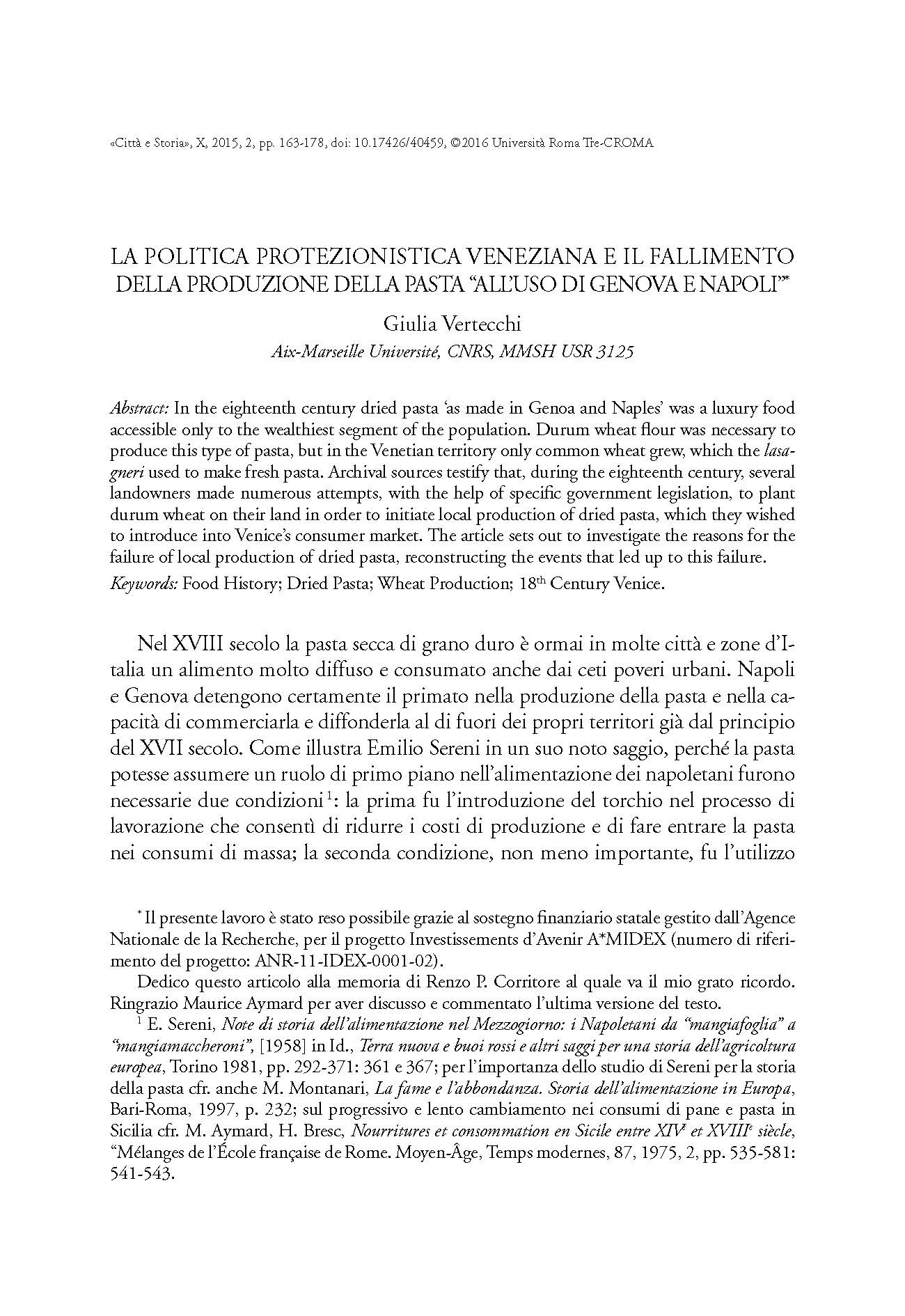La politica protezionistica veneziana e il fallimento della produzione della pasta “all’uso di Genova e Napoli”
6,00 €
In the eighteenth century dried pasta ‘as made in Genoa and Naples’ was a luxury food accessible only to the wealthiest segment of the population. Durum wheat flour was necessary to produce this type of pasta, but in the Venetian territory only common wheat grew, which the lasagneri used to make fresh pasta. Archival sources testify that, during the eighteenth century, several landowners made numerous attempts, with the help of specific government legislation, to plant durum wheat on their land in order to initiate local production of dried pasta, which they wished to introduce into Venice’s consumer market. The article sets out to investigate the reasons for the failure of local production of dried pasta, reconstructing the events that led up to this failure.
In the eighteenth century dried pasta ‘as made in Genoa and Naples’ was a luxury food accessible only to the wealthiest segment of the population. Durum wheat flour was necessary to produce this type of pasta, but in the Venetian territory only common wheat grew, which the lasagneri used to make fresh pasta. Archival sources testify that, during the eighteenth century, several landowners made numerous attempts, with the help of specific government legislation, to plant durum wheat on their land in order to initiate local production of dried pasta, which they wished to introduce into Venice’s consumer market. The article sets out to investigate the reasons for the failure of local production of dried pasta, reconstructing the events that led up to this failure.

